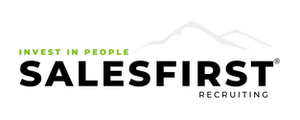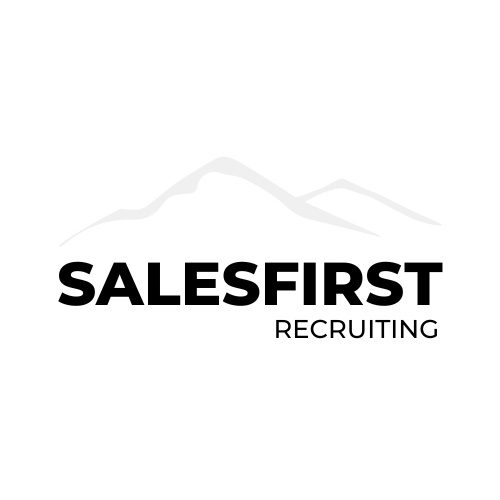The Cost of High Turnover in Sales and the Value of Retention
We all know that turnover of talent can be a significant drain on resources and morale, but it’s difficult to put a price on it, isn’t it?
High turnover rates not only disrupt the continuity of sales operations but also bring about substantial costs that can affect the bottom line of any organization. In fact, a comprehensive review from 30 case studies on the costs of employee turnover shows that it costs businesses on average about one-fifth of a worker’s salary to replace that worker. Add in the cost of recruiting services, and that amount can double. Here is why SalesFirst Recruiting believes that INVESTING IN PEOPLE and retaining top sales talent is often a more strategic and cost-effective approach than the constant cycle of replacing marginal performers.
Recruitment Costs:
The process of attracting, interviewing, and hiring new sales representatives demands significant investment in terms of both time and money. Despite the fact that SalesFirst Recruiting derives its income from recruiting fees, we wholeheartedly advocate for the following principles:
Long-Term Client Relationships: We prioritize fostering enduring partnerships with our clients.
Quality Over Quantity: Matching candidates to roles where they can thrive benefits both clients and candidates in the long run.
Positive Candidate Experience: Happy candidates are more likely to recommend our services.
Maintaining a Positive Reputation: Upholding our reputation is paramount.
If you happen to have a sales representative who hasn’t yet hit their stride, consider exploring additional strategies to enhance their performance. Some options include sales training, performance improvement plans (PIPs), or peer-to-peer mentorships. These interventions can make a significant difference in helping reps overcome challenges and contribute effectively.
Training and Onboarding Costs:
The process of training and onboarding new hires is a critical investment for any organization and has a mix of both clear and hidden costs. Organizations allocate resources to create training materials—whether through manuals, videos, e-learning modules, or any combination of resources. These costs include both the time and the hard costs of content creation, design, and distribution. Additionally, despite digital advancements, in-person training remains quite common for larger companies across the US. organizations often have regional events where new hires gather for training. This approach introduces even more expenses, including travel, accommodation, and meals.
Let’s not forget about another cost that lurks in the shadows. Even though companies pay trainers and managers involved in onboarding, there’s an overlooked group: current employees. They play an essential role, informally mentoring, coaching, and guiding new hires. That takes time and distracts your most helpful and tenured professionals.
Last, don’t forget that employees may require additional training due to specific skill gaps or unique job requirements. If you happen to be hiring during a period where there is low supply of candidates (or when you haven’t hired SalesFirst), you could end up hiring a rep with high potential but low experience that requires more specialized training.
Lost Productivity & Knowledge:
While the most apparent consequence is the absence of a dedicated sales representative, there are additional factors at play. For starters, when sales representatives leave, they take with them valuable knowledge that can be difficult to immediately replace. And new employees take time to become proficient. Yes, they’ll of course gain confidence and familiarity, but their initial learning curve impacts overall team efficiency.
Morale and Engagement:
If you have to release an employee, there is no point in delaying the inevitable. However, it’s crucial to recognize that employee turnover has far-reaching consequences beyond the immediate vacancy. Managing morale is a delicate dance- and when morale is low, employees may experience diminished job satisfaction, reduced engagement, and a lack of motivation. These negative emotions can directly translate into poor productivity. A disheartened workforce is less likely to collaborate effectively, innovate, or go the extra mile. Therefore, while addressing the practical need for employee release, organizations must also proactively manage morale to maintain a healthy and productive work environment. It’s doable - but there is always a cost.
The Benefits of Retaining Sales Talent:
SalesFirst Recruit’s Motto is INVEST IN PEOPLE. Here’s why you’ll always hear us talk about it!
Improved Company Culture: When experienced sales professionals stay with the company, they contribute to a positive work environment. Their institutional knowledge, camaraderie, and commitment enhance the overall culture, fostering collaboration and employee satisfaction.
Enhanced Customer Experience: Seasoned sales reps build lasting relationships with clients. Their deep understanding of customer needs, preferences, and pain points ensures consistent service and personalized interactions. Retaining such talent directly impacts customer satisfaction and loyalty.
Increased Revenue: Continuity in the sales team leads to consistent revenue generation. Established salespeople know how to navigate the sales cycle, close deals, and upsell. Their expertise translates into sustained business growth and financial success.
Engaged and Satisfied Employees: Retained sales talent feels valued and invested in the organization’s success. High morale and job satisfaction drive productivity, creativity, and a willingness to go the extra mile.
Positive Company Reputation: A stable sales team reflects positively on the company. Clients and partners perceive continuity as a sign of reliability and trustworthiness. A reputation for retaining top talent attracts both customers and prospective employees.
Ask SalesFirst Recruiting for Help!
At SalesFirst Recruiting, we understand that exceptional salespeople are the lifeblood of any organization. Hire the people that will stick around a long time!

